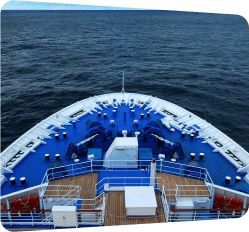
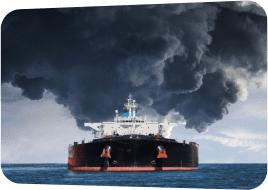
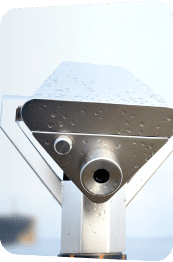
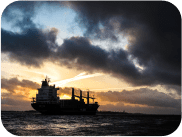
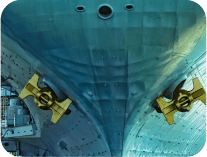
Reasons to install
Make sustainability goals profitable
With emission regulations growing stricter, having a clear road map to decarbonize your fleet is more important than ever.
Switching to renewable fuel will not be enough.
Only by combining it with our safe and proven technology, both newbuild and existing vessels will improve their greenhouse gas emission performance while remaining attractive as a business asset.

Reduce fuel cost
Imagine a kind of fuel which is free so there is no price volatility, abundant and infinite, renewable and that does not require any onboard storage because it is supplied at point of use.
Look no further, such a fuel is wind.
With bound4blue, ships can harness the power of wind and turn it into profit.

Regulatory compliance
Saving fuel also means saving emissions. Our eSAIL® helps shipowners and ship operators comply with the International Maritime Organisation (IMO) regulations and the European Union directives focused on reducing GHG emissions and improving energy efficiency across vessel fleets.
We help you stay ahead of environmental regulations.
Reduce
fuel cost
What will be the fuel of the future for ships? This is the question that everyone is trying to solve at the present time. However, while doing so they are forgetting something crucial: relying solely on alternative fuels does not produce the most optimal result in terms of emission reduction and economic impact.
The three big problems when talking about switching solely to sustainable fuels are:
-
Alternative fuels are expected to be three to ten times more expensive in the future.
-
In terms of infrastructure and retrofits, the Global Maritime Forum estimated that, assuming ammonia is the primary alternative fuel adopted, an investment of 1–1.4 trillion USD into new fuel over 20 years would be needed for the land-based infrastructure of the supply chain and ship retrofits to meet the current IMO 2050 goal. On top of that, it is hard to identify clear winners among the many different fuel options, which makes matters worse by postponing these investments.
-
In 2020 only 13% of the energy produced in the world came from renewables and this figure, which has remained quite stable throughout the last years, is not expected to increase significantly. While the supply of green fuels is and will remain constrained, its demand will grow exponentially, thus making shipping unlikely to be the first one in the queue.
The solution to move beyond this impasse is wind propulsion, which is:
A zero-emission energy source.
When using sails, the wind is directly used to propel ships with no intermediate energy conversion, therefore ensuring the highest possible efficiency.
Free and abundant.
So there is no price volatility.
Used at point
So no new infrastructure on land and onboard storage is needed.
No matter the fuel, the more cargo ships can rely on wind, the more certainty they will achieve regarding their operating costs and the lower those will be.
Regulatory
compliance
With the purpose of reducing emissions from international shipping, the International Maritime Organisation has set specific mandatory measures, such as the CII, EEXI, EEDI and FUEL EU.
IMO GHG STRATEGY
20%
Reduction of GHG emissions, striving for 30%, from international shipping by 2030 compared to 2008
70%
Reduction of GHG emissions, striving for 80%, from international shipping by 2040 compared to 2008
NET-ZERO
GHG emissions from international shipping by 2050
Moreover, the European Commission announced the ‘Fit for 55’ package of proposals intended to reduce the European Union’s total greenhouse gas emissions by fifty-five per cent by 2030 compared to 1990 levels and complete decarbonisation by 2050. Several proposals are relevant to shipping, such as EU ETS and Fuel EU.

In order to comply with these regulations, shipowners and ship operators do not necessarily have to make the full investment all in one go, but rather have the possibility to split it up according to each year’s regulatory compliance targets. Furthermore, at the end of a ship’s commercial life, the wind propulsion systems can also be transferred to other vessels.
REGULATIONS IN DEPTH
-
CII
CARBON INTENSITY INDICATOR
-
EEDI & EEXI
ENERGY EFFICIENCY DESIGN INDEX & ENERGY EFFICIENCY EXISTING SHIPS INDEX
-
EU ETS
EUROPEAN UNION EMISSIONS TRADING SYSTEM
-
FUEL EU
-
Retrofitting a ship with eSAILs® not only improves the CII rating, but also expands the lifetime of vessels that otherwise would have become non-compliant.
-
Our eSAIL® improves EEDI and EEXI, offering the possibility to meet the efficiency requirements of a ship without reducing its speed.
-
When shipping is included in the EU Emissions Trading System, our technology will generate spare allowances that could be kept for future needs or sold to others, thereby generating an additional revenue stream.
-
Ships using wind-assisted propulsion technologies will get rewarded by applying a factor to the total GHG intensity of fuel used.
-
CII
CARBON INTENSITY INDICATOR
Retrofitting a ship with eSAILs® not only improves the CII rating, but also expands the lifetime of vessels that otherwise would have become non-compliant.
-
EEDI & EEXI
ENERGY EFFICIENCY DESIGN INDEX & ENERGY EFFICIENCY EXISTING SHIPS INDEX
Our eSAIL® improves EEDI and EEXI, offering the possibility to meet the efficiency requirements of a ship without reducing its speed.
-
EU ETS
EUROPEAN UNION EMISSIONS TRADING SYSTEM
When shipping is included in the EU Emissions Trading System, our technology will generate spare allowances that could be kept for future needs or sold to others, thereby generating an additional revenue stream.
-
FUEL EU
Ships using wind-assisted propulsion technologies will get rewarded by applying a factor to the total GHG intensity of fuel used.